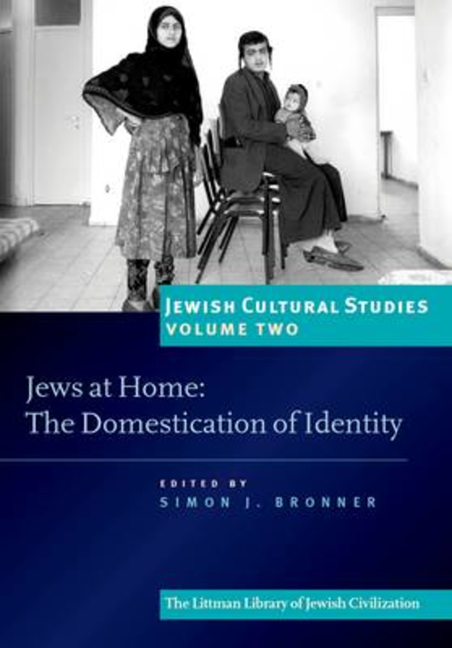Book contents
- Frontmatter
- Dedication
- Miscellaneous Frontmatter
- Acknowledgements
- Contents
- Note on Transliteration
- Introduction: The Dualities of House and Home in Jewish Culture
- PART I IN AND OUT OF THE HOME
- PART II SACRED, SECULAR, AND PRO FANE IN THE HOME
- PART III WRITING HOME
- PART IV FORUM: FEELING AT HOME
- INTRODUCTION
- RESPONSES
- 11 At Home in the World
- 12 The Co-Construction of Europe as a Jewish Home
- 13 Reflections on ‘Culture Mavens’ from an Australian Jewish Perspective
- 14 There's No Place Like Home: America, Israel, and the (Mixed) Blessings of Assimilation
- 15 The Last Word: A Response
- Contributors
- Index
12 - The Co-Construction of Europe as a Jewish Home
from RESPONSES
- Frontmatter
- Dedication
- Miscellaneous Frontmatter
- Acknowledgements
- Contents
- Note on Transliteration
- Introduction: The Dualities of House and Home in Jewish Culture
- PART I IN AND OUT OF THE HOME
- PART II SACRED, SECULAR, AND PRO FANE IN THE HOME
- PART III WRITING HOME
- PART IV FORUM: FEELING AT HOME
- INTRODUCTION
- RESPONSES
- 11 At Home in the World
- 12 The Co-Construction of Europe as a Jewish Home
- 13 Reflections on ‘Culture Mavens’ from an Australian Jewish Perspective
- 14 There's No Place Like Home: America, Israel, and the (Mixed) Blessings of Assimilation
- 15 The Last Word: A Response
- Contributors
- Index
Summary
WHEN SIMON J. BRONNER asked me to contribute to this forum, I told him I was hesitant because I myself am not Jewish. Of course I know that, as he wrote to me, ‘it wouldn't be a very objective field if we had only Jews talking about Jewishness’, and I do like what somebody once said: ‘in order to study or teach mathematics, you don't have to be a triangle’.
It just so happens that in the last ten or fifteen years—all over Europe, but especially in Germany—the non-triangles have been doing a lot of mathematics, and this phenomenon is worth considering under the rubric of ‘feeling at home’. In order to find some firm ground for my hesitating feet, I will base my discussion on the ideas and notions of Henri Lefèbvre, Diana Pinto, Ruth Ellen Gruber, David Biale, and some others, whose texts I recently discussed with a group of students at the first Leo Baeck Summer University in Berlin.
The main focus of my module at the Summer University was the notion of ‘Jewish space’ as a co-constructed field of cultural and political activity: can we call Berlin a ‘Jewish space’ (again), and what would that mean? What is ‘Jewish’ about, say, the Jewish Museum, the guided tour through a former east European Jewish quarter in the city, or a Max Liebermann exhibition in one of the many new bank buildings? We have learned from Henri Lefèbvre, in his The Production of Space (1991), ‘that space is a social product’, that is, a complex social construct (based on values, and the social production of meanings) which affects spatial practices and perceptions, and that ‘the space thus produced also serves as a tool of thought and action; that in addition to being a means of production it is also a means of control, and hence of domination, of power’ (p. 26). This is true for all kinds of different spaces. Still, when Diana Pinto took up this notion in the 1990s and presented us with her idea of Europe as a ‘third pillar’ of Jewish existence, next to Israel and the United States, and with her notion of Europe as a new ‘Jewish space’, the question of domination and power was not the most urgent one (Pinto 2001).
- Type
- Chapter
- Information
- Jews at Home , pp. 301 - 306Publisher: Liverpool University PressPrint publication year: 2010

